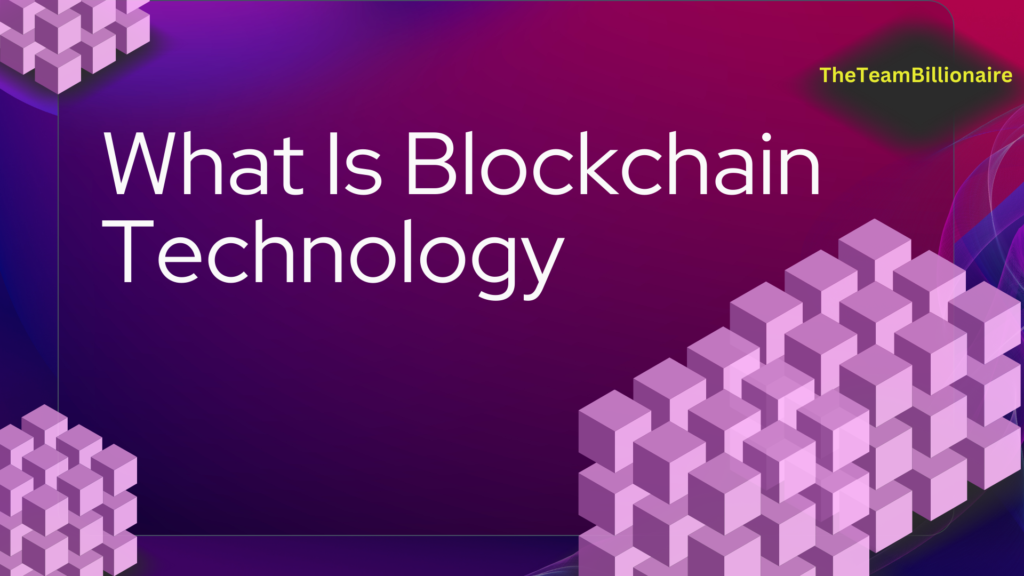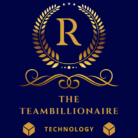In this blog we are discussing about the most emerging technology of Blockchain. Here we will look at what blockchain is and how it works with the future of blockchain technology. Blockchain, sometimes called distributed ledger technology (DLT), makes the history of any digital asset immutable and transparent through the use of decentralized networks and cryptographic hashing.
What Is Blockchain Technology
Blockchain technology is most simply defined as a decentralized, distributed ledger that records the provenance of a digital asset. Also, We can Say Blockchain technology is a structure that stores transactional records, also known as the block, of the public in several databases, known as the “chain,” in a network connected through peer-to-peer nodes. Typically, this storage is referred to as a ‘digital ledger.’ which makes the history of any digital asset unalterable and transparent through the use of decentralization and cryptographic hashing.
Traditional database technologies pose many challenges in terms of recording financial transactions. Consider, for example, the sale of a property. Once the exchange is complete, ownership of the property passes to the buyer. Individuals, the buyer and the seller can record transactions, but they cannot rely on two things. The seller can easily claim that the money was not received, and the buyer can equally claim that no payment was made
Key Facts Of Blockchain
- A blockchain is a digital ledger or database where encrypted chunks of digital asset data are stored and chained together to create a single source of truth for data over time Digital assets are distributed, not copied or transferred.
- The digital assets are decentralized, providing real-time, transparent and controlled access to more than one party.
- Blockchain ledgers are transparent — any changes are recorded, preserving integrity and trust.
- Blockchain ledgers are public and built with inherent security measures, making them a key technology for virtually any enterprise.
Reason Behind Popularity In Blockchain –
Business runs on information. The faster it’s received and the more accurate it is, the better. Blockchain is ideal for delivering that information because it provides immediate, shared and completely transparent information stored on an immutable ledger that can be accessed only by permission network members. A blockchain network can track orders, payments, accounts, production and much more. And because members share a single view of the truth, you can see all details of a transaction end to end, giving you greater confidence, as well as new efficiencies and opportunities.
Why Is Blockchain Important?
Blockchain for business uses a shared and immutable ledger that can only be accessed by members with permission. Network members are responsible for what information each organization or member can see and what actions everyone can take. Blockchain is sometimes referred to as a “trustless” network — not because traders don’t trust each other, but because they don’t trust each other. This trust is built on the increased security, greater transparency and instant traceability of the blockchain. In addition to trust issues, blockchain offers even more business benefits, including cost savings from increased speed, productivity and increased automation. By dramatically reducing paperwork and errors, blockchain dramatically reduces transaction costs and processing, reducing or eliminating the need for third parties or intermediaries to verify that transactions is on the truth.

How Does Blockchain Work?
Blockchain is a combination of three leading technologies:
- Cryptographic keys
- A peer-to-peer network containing a shared ledger
- A means of computing, to store the transactions and records of the network
Cryptography keys consist of two keys – Private key and Public key. These keys help in performing successful transactions between two parties. Each individual has these two keys, which they use to produce a secure digital identity reference. This secured identity is the most important aspect of Blockchain technology. In the world of cryptocurrency, this identity is referred to as ‘digital signature’ and is used for authorizing and controlling transactions.
The digital signature is merged with the peer-to-peer network; a large number of individuals who act as authorities use the digital signature in order to reach a consensus on transactions, among other issues. When they authorize an immutable records deal, it is certified by a mathematical verification, which results in a successfully secured transaction between the two network-connected parties. So to sum it up, Blockchain users employ cryptography keys to perform different types of digital interactions over the peer-to-peer network.
[ Good Read: Decentralized Application ]
Key elements of a blockchain :
- Distributed ledger technology
- Immutable records
- Smart contracts
Types of blockchain networks :
- Public blockchain networks
- Private blockchain networks
- Permissioned blockchain networks
- Consortium blockchains
Future Of Blockchain Technology:
- Through 2022, only 12% of enterprises will achieve any radical transformation by using blockchain
- In 2022, at least one innovative business built on blockchain technology will be worth $15 billion
- By 2026, the business value added by blockchain will grow to just over $380 billion, then by 2030 grow to more than $3.5 trillion
Cybersecurity is one of the most promising areas of projected growth for blockchain technology. An ongoing challenge for businesses of all sizes is data tampering. Blockchain technology can be used to prevent tampering, keep data secure and allow participants to verify a file’s authenticity.
“We believe that blockchain technology will be transformative in the tech and IT sector in the coming years, similar to what the internet did for the world back in the 90s and early 2000s,” said John Zanni, President of the Acronis Foundation, in Forbes. “Today, part of our storage and backup software lets users notarize any digital data and put that fingerprint on the blockchain to ensure it can’t be tampered with.”What is it, How it works and Future of Decentralized
